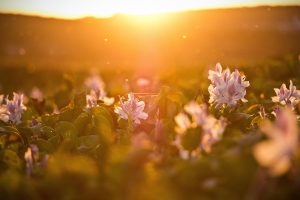Summer solstice 2021 is here and it has a long history of stirring hearts and increasing libido. Known as the longest day of the year in the Northern Hemisphere, it kicks off the official calendar start of summer and with it comes the bounty of the harvest.
According to a CNN report, the Summer solstice is often linked to fertility – in both humans and plants. The traditions followed on the summer solstice across the globe are dubbed as romance by some, while some say it is sensuality and others term it as lust. Let’s look at some summer traditions.
A Slavic Cupid
In Eastern Europe, the summer solstice is linked to Ivan Kupala Day. It is a holiday with romantic connotations for many Slavs. Kupala means ‘cupid’. It’s also called Kupala Night.
According to Polish folklore, bachelorettes would float wreaths on the river with bachelors, present on the other side of the river, would try and catch the wreaths. Subsequently, the man and the woman would become a couple.
Bonfires, too, play a huge role in their relationship. It is believed that if the couple manages to leap through the flames without leaving each other’s hands, they are mean to be together.
The celebration is marked with people singing about love and romance.
Greece’s Pagan rites
In Greece, there is a mythology of dreaming about one’s future spouses. The solstice after being co-opted by Christianity was rebranded at St John’s day. This is how the ritual goes.
Known as Klidonas, local virgins gather water from the sea and place a personal item in the pot filled with water and place it under a fig tree overnight. The folklore goes that the magic of the day imbues the objects with prophetic powers, and the girls in question dream of their future husbands.
Later, the men and women get together and take turns jumping over a bonfire. Whosoever jumps over the fire thrice, successfully, will have their wish granted.
Midsummer in Sweden
In Sweden, traditions include dancing around a maypole, a symbol that is viewed as phallic. Midsummer includes feating on herring and vodka.
“A lot of children are born nine months after Midsummer in Sweden,” CNN quoted Jan-Öjvind Swahn, a Swedish ethnologist, as saying in 2016.
“Drinking is the most typical Midsummer tradition. There are historical pictures of people drinking to the point where they can’t go on anymore,” said Swahn.
The process of offering a drink to a deity is often linked to the increase in newborns, Swahn mentioned that Midsummer is often referred to as a romantic ritual, CNN reported.



